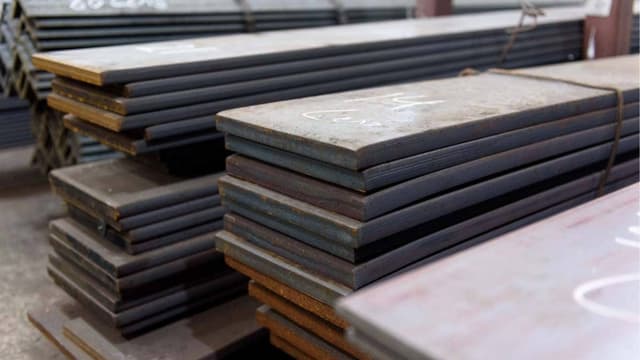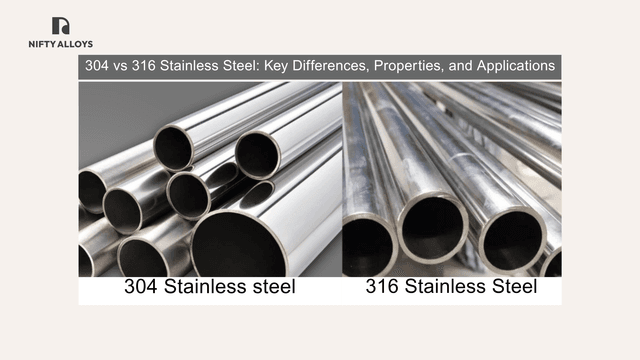Why 4140 Alloy Steel Is the Most Popular Engineering Steel
This article provides a comprehensive overview of 4140 alloy steel, detailing its composition, properties, and the key reasons for its widespread popularity. We will explore the differences between various conditions, including annealed, pre-hardened, and heat-treated states, to help you make informed decisions for your specific applications.

In the world of engineering and manufacturing, material selection is a critical decision that directly impacts the performance, durability, and cost-effectiveness of a final product. Among the vast array of available materials, AISI 4140 alloy steel consistently stands out. This versatile, chromium-molybdenum alloy steel has earned its reputation as a preferred choice for engineers, fabricators, and procurement professionals across numerous industries. Its balanced combination of strength, toughness, and wear resistance makes it an indispensable asset.
What Is 4140 Alloy Steel?
SAE 4140 (also known as AISI 4140) is a medium-carbon alloy steel that contains chromium and molybdenum as its primary alloying elements. It is widely recognized for its exceptional toughness, high fatigue strength, and abrasion resistance. The "41" designation indicates it is a chromium-molybdenum steel, while the "40" signifies a nominal carbon content of 0.40%. This specific composition gives the 4140 steel bar its unique and highly desirable mechanical properties.
Often referred to as "chrome-moly" steel, it provides an excellent strength-to-weight ratio and is significantly stronger and more durable than standard carbon steels. Its versatility is further enhanced through heat treatment, which allows its properties to be tailored to meet precise engineering requirements.
Chemical Composition
The performance of 4140 alloy steel is directly linked to its chemical makeup. While minor variations exist based on specifications like ASTM A4140, the typical composition provides a reliable balance of hardness and ductility.
Element | Content (%) | Role in the Alloy |
| Carbon (C) | 0.38 - 0.43 | Primary hardening element; increases strength and hardness. |
| Chromium (Cr) | 0.80 - 1.10 | Improves hardenability, corrosion resistance, and wear resistance. |
| Molybdenum (Mo) | 0.15 - 0.25 | Increases toughness, creep strength, and response to heat treatment. |
| Manganese (Mn) | 0.75 - 1.00 | Enhances hardenability and strength. |
| Silicon (Si) | 0.15 - 0.35 | Acts as a deoxidizer and slightly increases strength. |
| Phosphorus (P) | ≤ 0.035 | Impurity, kept low to prevent brittleness. |
| Sulfur (S) | ≤ 0.040 | Impurity, controlled to improve toughness and ductility. |
Key Characteristics and Advantages of 4140 Steel
The popularity of 4140 alloy steel stems from a powerful combination of mechanical properties that make it suitable for demanding applications.
- High Strength: It offers excellent tensile and yield strength, especially after a proper 4140 heat treat process.
- Superior Toughness: Unlike some high-strength materials that can be brittle, 4140 maintains good ductility and toughness, resisting fracture under impact.
- Excellent Wear Resistance: The chromium content contributes to a hard surface that resists abrasion and wear, extending the service life of components.
- Good Fatigue Strength: It can withstand repeated stress cycles without failing, making it ideal for components subjected to dynamic loads, like shafts and gears.
- Versatile Heat Treatment Response: The 4140 material properties can be precisely manipulated through quenching and tempering to achieve a desired balance of hardness and ductility.
These advantages make it a reliable and cost-effective choice compared to more specialized or expensive alloys. You can find it readily available in various forms, including the popular 4140 round bar, as well as 4140 flat bar and 4140 square bar.
Understanding 4140 Steel Properties in Different Conditions
The properties of 4140 steel are not static; they change significantly based on its thermal processing. Understanding these conditions is crucial for selecting the right material for your project.
1. Annealed (As-Supplied) Condition
- In its annealed or "as-supplied" state, 4140 steel is relatively soft and easy to machine. This condition is achieved by heating the steel and then cooling it slowly, which relieves internal stresses and refines the grain structure. While its strength is lower in this state, it provides the ideal starting point for machining before subsequent hardening.
2. Pre-Hardened 4140 Steel
- Pre-hardened 4140 steel (often designated as 4140 PH) is delivered from the mill already quenched and tempered to a specific hardness range, typically 28-32 HRC. This offers a major advantage: it eliminates the need for further heat treatment after machining, saving time and reducing the risk of distortion.
- The 4140 pre hardened steel properties provide a good compromise of strength and machinability. It is strong enough for many applications without being too hard to machine effectively. This makes it a popular choice for components like shafts, bolts, and molds.
3. Hardened and Tempered (4140 HT) Condition
- For maximum performance, 4140 steel is subjected to a full heat treatment process of quenching and tempering. The material is heated to a high temperature, rapidly cooled (quenched) in oil or water, and then reheated to a lower temperature (tempered) to achieve the final desired properties.
- This is where 4140 HT steel truly shines. The 4140 HT steel properties include significantly higher tensile strength and hardness compared to the pre-hardened condition. The tempering temperature can be adjusted to fine-tune the balance between hardness and toughness, making it adaptable to extreme service conditions. The AISI 4140 mechanical properties in the HT condition make it suitable for high-stress parts.
Typical Mechanical Properties of 4140 Steel
Property | Annealed (815°C) | Pre-Hardened (28-32 HRC) | Hardened & Tempered (42 HRC) |
| Tensile Strength | ~655 MPa (95,000 psi) | ~930 MPa (135,000 psi) | ~1380 MPa (200,000 psi) |
| Yield Strength | ~415 MPa (60,000 psi) | ~800 MPa (116,000 psi) | ~1240 MPa (180,000 psi) |
| Elongation (%) | ~25.7% | ~18% | ~14% |
| Hardness (Brinell) | ~197 | ~270-300 | ~390 |
Comparison: 4140 vs. Other Common Steels
To appreciate why AISI 4140 steel is so prevalent, it helps to compare it with other engineering steels.
- 4140 vs. 1045 Carbon Steel: While 1045 is a strong carbon steel, it lacks the alloying elements of 4140. As a result, SAE 4140 offers superior hardenability, toughness, and strength, especially in larger cross-sections.
- 4140 vs. 4130 Alloy Steel: 4130 has a lower carbon content (0.30%), which makes it easier to weld but gives it lower strength and hardness compared to 4140. For applications requiring maximum strength and wear resistance, 4140 is the superior choice. An AISI 4140 equivalent might be considered, but few offer the same balanced profile.
- 4140 vs. 4340 Alloy Steel: 4340 contains nickel in addition to chromium and molybdenum. This gives it even greater toughness and hardenability than 4140, but it comes at a higher cost. For most applications, 4140 provides sufficient performance more economically.
Key Performance Factors: Machinability, Toughness, and Fatigue Strength
Machinability
- The machinability of 4140 depends heavily on its hardness. In the annealed state, it machines well with a rating of around 65% compared to 1112 carbon steel. As hardness increases through heat treatment, machinability decreases. Pre-hardened 4140 offers a practical balance, allowing for decent machining speeds while retaining good strength.
Toughness and Fatigue Strength
- Toughness is where 4140 truly excels. It can absorb significant energy and impact without fracturing. This, combined with its high fatigue strength, makes it an ideal material for rotating parts, axles, and structural components that endure cyclical loads. The molybdenum content plays a crucial role in preventing temper embrittlement, ensuring toughness is maintained after the 4140 heat treat process.
Common Industrial Applications of 4140 Steel
The robust properties of 4140 make it a staple in numerous demanding sectors. It is available in various profiles, including 4140 hex bar and the widely used AISI 4140 round bar.
- Automotive and Aerospace: Used for crankshafts, camshafts, axles, and landing gear components.
- Oil & Gas: Employed in downhole drilling tools, drill collars, and pump components.
- Manufacturing: Ideal for gears, spindles, jigs, fixtures, and machine tool holders.
- Construction: Used for structural bolts, pins, and couplings.
- Firearms: Barrels, bolts, and other high-stress components are often made from 4140 steel.
Sourcing High-Quality 4140 Alloy Steel
For applications where performance and reliability are non-negotiable, sourcing certified materials is paramount. At Nifty Alloys, we are a premier supplier of high-grade alloy steel products, including a comprehensive stock of 4140 in various forms. Whether you require a 4140 round bar, flat bar, or square bar, our materials meet stringent international standards and come with full mill test certification.
We understand the technical demands of your projects. Our commitment is to provide materials that deliver consistent quality and performance, ensuring your components function reliably under the most challenging conditions.
Frequently Asked Questions (FAQ)
- What makes 4140 steel so popular?
4140 steel is popular due to its exceptional combination of high strength, superior toughness, good fatigue resistance, and excellent wear resistance at a reasonable cost. Its versatility through heat treatment allows its properties to be tailored for a wide range of engineering applications. - Is AISI 4140 steel strong?
Yes, AISI 4140 is a very strong alloy steel. In its hardened and tempered condition, it can achieve tensile strengths exceeding 1380 MPa (200,000 psi), making it suitable for high-stress and heavy-load applications. - What is 4140 HT steel?
4140 HT steel refers to 4140 alloy steel that has been "Hardened and Tempered." This heat treatment process involves quenching and tempering to significantly increase its strength, hardness, and toughness beyond the as-supplied or pre-hardened conditions. - What are the properties of 4140 alloy steel?
The main 4140 material properties include high tensile strength, good ductility, excellent toughness, high wear resistance, and good fatigue strength. These properties can be precisely controlled through heat treatment. - Is SAE 4140 good for machining?
SAE 4140 has fair machinability. In its annealed (softest) state, it is easiest to machine. Machining becomes more challenging as hardness increases. Pre-hardened 4140 offers a good balance between strength and machinability for many jobs. - What is the difference between 4140 and other alloy steels?
Compared to 1045 carbon steel, 4140 has superior hardenability and toughness. It is stronger than 4130 due to higher carbon content but is more economical than higher-grade alloys like 4340, which offers greater toughness at a higher price. - How does heat treatment affect 4140 material?
Heat treatment fundamentally changes the 4140 material properties. Annealing makes it soft and machinable. Quenching and tempering (the 4140 heat treat process) dramatically increase its hardness, tensile strength, and wear resistance, allowing for performance customization. - Where to buy 4140 round bar in Dubai/UAE?
Nifty Alloys is a leading supplier of high-quality 4140 round bar and other alloy steel products in Dubai and across the UAE. We provide mill-certified materials that meet international standards for all industrial needs.

Understanding the difference between mild steel and carbon steel, or how alloy steel compares in str...

This guide provides a comprehensive explanation of tool steel grades to help you make informed decis...

In this blog, we’ll dive deep into 304 vs 316 stainless steel, covering their composition, propertie...

In this comprehensive guide, we break down exactly what is alloy steel, the different types of alloy...

Elevate Your Projects with
with
 Our Superior Steels
Our Superior Steels





